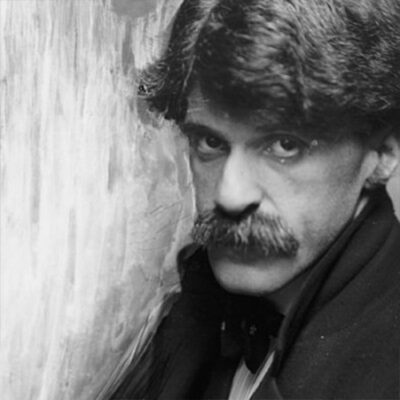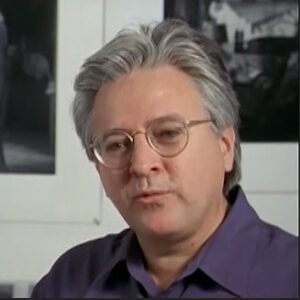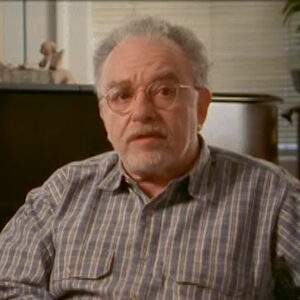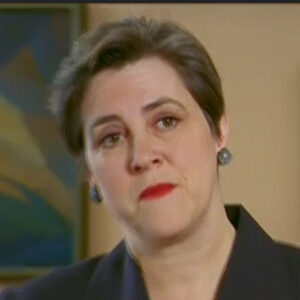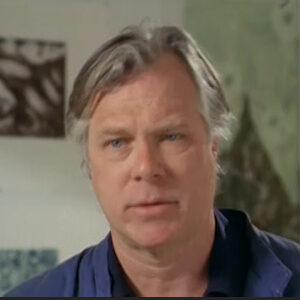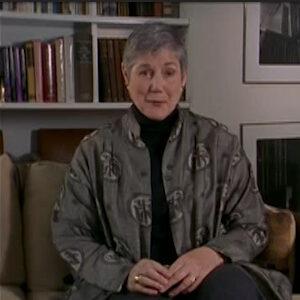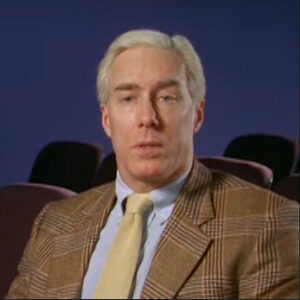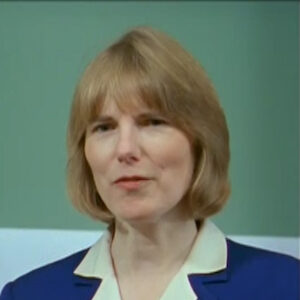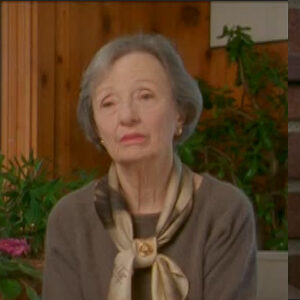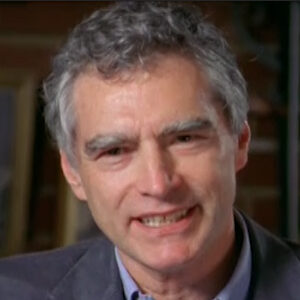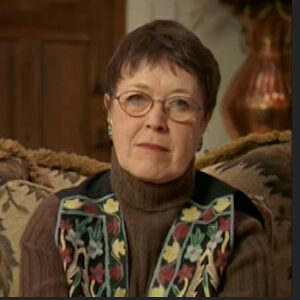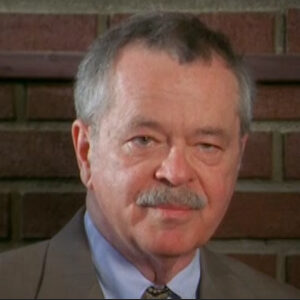Interviewer: Could you tell us a little bit about some of the things you have in mind in doing in doing this show? The four artists of the Steel Circle?
Lynes: Well, one of the reasons that I was interested in organizing the four pairs of the Stieglitz circle was that I was very interested in the artists that Stieglitz represented. And I was interested in seeing how their works look together. Stieglitz organized many shows of these artists work O’Keeffe, John Marein, Arthur Dove and and Hartley. And I was interested in the period. Nineteen or five. I mean, 1987 through 1925. So I think we all got. I was very interested in organizing an exhibition that would demonstrate the relationship between the works of various artists that Stieglitz promoted throughout his years of exhibiting modern art in New York and starting over again.
Interviewer: And a little little less formal start. Well, you know, the way you started before, the fact that they that the cut. OK. The.
Lynes: One of the reasons I was interested in organizing this exhibition is because it would allow me to see the works of these artists together. The work of Georgia O’Keeffe, John Myhren, Arthur Dove and Martin Hartley. These are the four artists that Stieglitz devoted most of his promotional energies to during the 40 years that he exhibited their work in New York City. I was also interested in organizing this exhibition around the years 1987 to 1925, because those are important years in Stieglitz as history, and that is he opened his photography gallery, the gallery of the photo session in 1985. And two years later, he began to also exhibit modern art, both European and American art, for the next series of years until 1925. He continued to show American and European modernism in a series of exhibitions at either to ninety one, the Anderson Galleries or at an American place that really caused a great deal of controversy and a great deal of interest on the part of critics in New York. Stieglitz was interested in the avant garde. He was interested in what was new in art, and he was interested in exhibiting that in one of his various galleries. And he always created a stir around these exhibitions because they were very controversial. Modern art was not something that Americans were quick to warm up to. It was hard for them to appreciate the abstraction and the various issues that were present in the works of these four artists. So I brought the works of Hartly, Miron, O’Keefe and Dove together from the years 1987 when Stieglitz began to include European and American modernism in his exhibitions in 1925, when you made a decision to promote exclusively American modernists. And what I felt this period period represented was a period in which Stieglitz was making decisions about the nature of the art that these artists were doing, so that by 1925 he really felt that they were demonstrating a kind of indigenous American modernism that he felt was strong enough to promote exclusively to the exclusion of European modernism. And that’s what he did for the next years until his death in nineteen forty six.
Interviewer: Could you tell us what you’ve seen before that? Usually, I think it’s worth mentioning, with the exception, maybe the seven Americans that actually he showed individually.
Lynes: Yes, he showed the artists. He showed each of these artists. Okay. Okay. Stieglitz had exhibitions for each of these artists regularly during the period that he exhibited their work in 1925. He organized an exhibition that included all of their works. I was interested in bringing all of their works together so that I could see how their work related one to the other during this period is very interesting to see. For instance, Marin’s work is filled with references to European modernism, such as the influence of cubism, and he’s very interested in the issue of abstraction. And we also see that in the work of O’Keefe. O’Keefe and Dove in this exhibition demonstrate their real interest in abstraction, and that is moving away from representation and capturing the essence of something in an abstract image. I have been able to borrow pictures that allow people to understand the relationship between these artists. For example, there’s a picture, an oil painting in the exhibition from nineteen eighteen called From the Plains, which is a really beautiful oil painting that was done by O’Keefe. Actually, it’s 1919 after she moved from Texas to New York and it has very jagged sort of soul like forms in it. And it’s an avocation of the freedom and the kind of energy she felt during the years that she was working in Texas. And you see these same kind of jagged forms and the same kind of energy and the work of Dove. So it’s as if she and Dove have a kind of relationship in terms of aesthetics that they were born with and they were able to communicate about this issue without having to say much. Both of them appreciated these same issues in terms of abstraction. Probably the most eclectic artist at this moment in the exhibition is Hertling. And in the works of Marston Hartley, you see him borrowing again from European modernism, first by imitating post-impressionist painters in his works from. Nineteen 07, nineteen away, nineteen 09, and then he also has a period when he’s in Berlin where his work is extremely interesting, very, very innovative. He’s very influenced and inspired by what he sees in pre-war Germany. A lot of the officers in military uniforms give his work a kind of intensity and also demonstrate that he’s very influenced at that point by German expressionism and the kinds of art that he’s exposed to in Europe a little bit later after he comes back. He leaves Germany because of the outbreak of World War One. And he spends a period of time in Provincetown where you can see the influence of Picasso. And his works from that period are a great deal more sober than they are during the period he was in Berlin. And then in the 20s, he moves into imitating and looking at the work of stays on. So of all the artists in the exhibition, Hartley reflects more of the influence of European modernism on the development of his work. Probably the least influenced his O’Keeffe, although she was certainly aware of European modernism because she was looking at images in Stieglitz, his publication camerawork, where a lot of European modernist works were reproduced, and she was certainly aware of that. But one of the big issues that Stieglitz tried to promote about O’Keeffe was that she was exclusively American, that she came from the American soil, that she was an American artist, that she wasn’t influenced by the Europeans, so that she, of all the artist, represented a kind of purity in his mind, a clarity and almost in an instinctive appreciation of abstraction. She was.
Interviewer: Actually, we’ll just finish that again. No. Don’t just. No, no, no, just just she the last thing you said. And then stop, because I’d like you to tell me something about who did influence. I’d like you to bring it down now if you. OK. OK.
Lynes: One of the things that’s most interesting about O’Keefe is that her work is extremely abstract during this period. And she does some of the most innovative abstractions in all of American art of the period between 1915 and 1918. During these years, she’s in Texas. She’s teaching school at West Texas, Normal State College in Canyon. And she’s corresponding with Stieglitz because they began their correspondence after he exhibited her work for the first time in 1916, May of 1916. And he’s sending her camera work, which is the publication that he produces and edits regularly in which she sees the work of Kandinski, in which she sees the work of various European modernists. I remember also that she had been trained as a traditional. She had been given a traditional training as an artist, first at the Art Institute of Chicago, 1985 and 1986, and then at the Art Students League in 1987 and 1988, where she’d won a major prize for her ability to manipulate lights and darks and to create an image that represented how things look in nature. Imitative realism, which was the traditional method that artists had been trained by for years. And in 1988, after she won this award, which is called Untitled Dead Rabbit with Copper Pot. This was the William Merritt Chase. Still Life award that she won from the Art Students League. She decided to give a painting because she felt that she couldn’t distinguish herself working within that tradition. And she quit making art. Between 1988, 19 in 20, 1912. And then in 1912, she was living with her family in the summer in Williamsburg, Virginia. Charlottesville, Virginia.
Interviewer: I’d like to I’d like to get to the fact that she did study. We’ve come and right now we have done.
Lynes: Yes, I have done a lot of that in.

